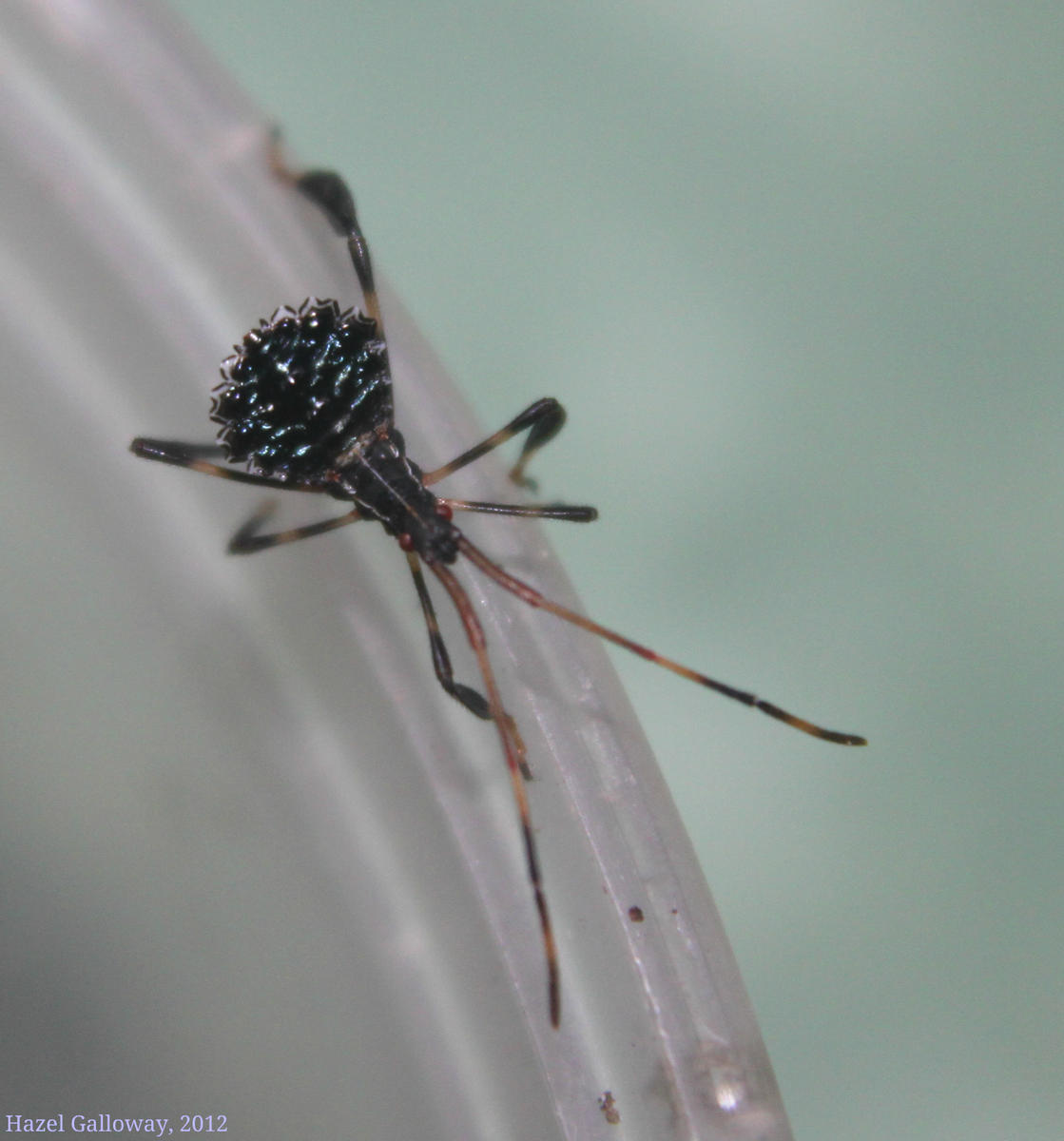This leaf-footed bug is a member of the order of true bugs, Hemiptera. Although they occupy a different family from stinkbugs, the adults look similar enough that leaf-footed bugs are sometimes called “scentless plant bugs.” Leaf-footed bugs belong to the family Coreidae, which also includes squash bugs and similar insects. Although not all bugs in this family feed on squash or have the peculiar leaf-like sections on their hind legs that gives leaf-footed bugs their name, they do share a few uniting characteristics. All insects in the family Coreidae have four-segmented antennae, a front wing membrane covered with many visible veins, and a head that is narrower and often shorter than the pronotum (the front, triangular body segment located behind the head). 
This species, Acanthocephala terminalis, is a very common species of leaf-footed bug and the only member of its genus found north of North Carolina. It is typically dark- or reddish-brown colored, as are the first three segments of its antennae. The fourth, however, is pale orange, yellowish, or whitish in color, a distinctive trait referred to by its species name, terminalis. Relatively small for its genus, adults can reach 20-22 mm (over ¾”).
This bug can be found throughout much of the eastern US and southern Canada, spreading west as far as Colorado and Texas. It is usually encountered on vegetation, especially on trees and shrubs on the edges of forests or in weedy fields. Both the nymphs and the adults feed on sap which they suck from various plants, including staghorn sumac, river grape, and nine-bark. They are also commonly found on ash, elm, and linden trees as well as blackberries and other shrubs; however, there is no definite evidence of them feeding on these plants.
In the late spring, these bugs mate and females lay eggs attached to the leaves of host plants. After the juveniles hatch, they pass through five instars (moults) before becoming adults. When they have first hatched, they resemble tiny, pinkish-whitish versions of this nymph. With each moult, the bugs increase in size and resemblance to the adult until, by the fifth instar, they have almost reached their adult size and nearly resemble the adult. However, many of the early nymphs are quite unique-looking. They tend to have rounded, flat abdomens fringed by a zig-zag whitish fringe, which they hold aloft as they crawl. In addition, all of their legs are somewhat flattened and leaf-like, instead of just the rear two (as is the case with the adults).
Once it is mature, this species overwinters as an adult, and will mate and lay eggs again in the springtime. This nymph was found by Vince at the picnic last Sunday. It is a juvenile in its second instar.



